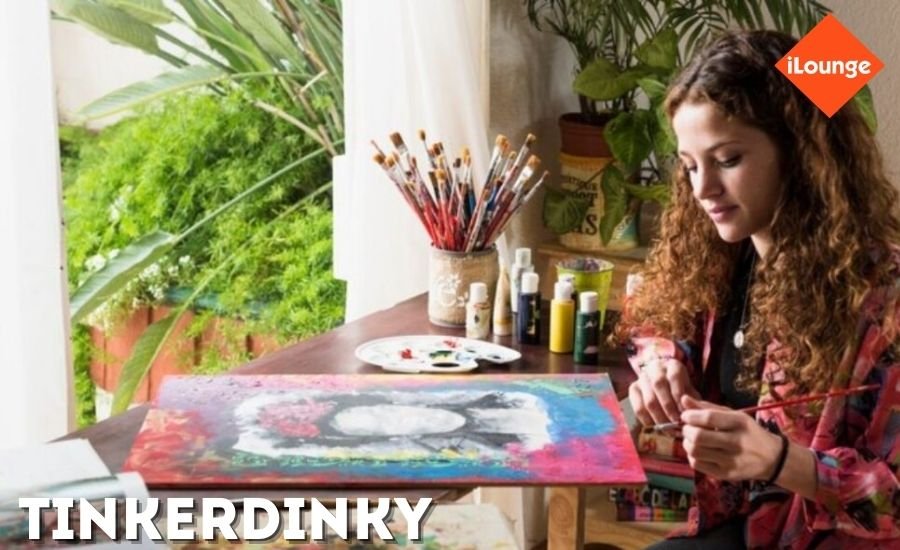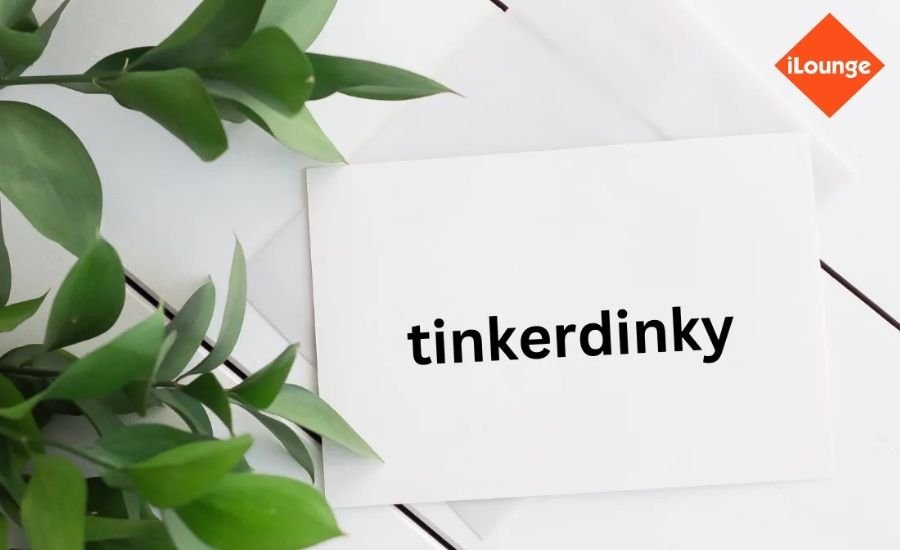Tinkerdinky: Your Ultimate Guide to Unleashing Creativity through Tinkering

Welcome to the world of Tinkerdinky! Imagine a place where creative exploration meets hands-on experimentation, sparking endless possibilities. Whether you’rea beginner or an experienced tinkerer, Tinkerdinky encourages you to dive into projects that inspire creativity, innovation, and joy. This ultimate guide will walk you through everything you need to know about Tinkerdinky—from getting started with simple materials to mastering advanced techniques for building unique creations. Let’s unlock the magic of Tinkerdinky together!
What is Tinkerdinky?
Tinkerdinky is more than a trend—it’s a philosophy. At its heart, Tinkerdinky is about using everyday items to create, explore, and innovate. By combining elements of tinkering (experimenting with parts and materials) and creativity, Tinkerdinky provides a playful environment where you’re free to invent and explore without boundaries. Whether working with recycled materials, crafting intricate designs, or solving problems through simple engineering, Tinkerdinky encourages everyone to embrace the process of “just try it!”
Tinkerdinky is a movement aimed at all ages, bringing people together through hands-on projects that inspire joy, spark curiosity, and foster lifelong learning.
Why Tinkering is Essential in Today’s World
In today’s fast-paced, technology-driven world, Tinkerdinky offers a refreshing shift. With so much screen time and digital exposure, hands-on activities like tinkering help ground us in real-world experiences, build resilience, and promote innovative thinking. Here are some benefits that highlight the importance of tinkering in our lives:
- Improved Problem-Solving: Tinkering develops problem-solving skills, teaching you to look at challenges from multiple angles and to creatively troubleshoot along the way.
- Increased Focus and Patience: Through trial and error, Tinkerdinky encourages patience, resilience, and persistence.
- Connection with the Physical World: Tinkering helps you stay connected to your environment by repurposing materials, making creativity sustainable and accessible.
For children and adults, Tinkerdinky nurtures a mindset of adaptability, which is critical to thriving in the modern world.
Getting Started with Tinkerdinky: Essential Tools and Materials
Before you dive in, setting up a creative toolkit is essential. Here are some items you might want to have on hand:
Basic Tools
- Scissors and Craft Knives: For precise cutting.
- Glue: Glue sticks and hot glue guns can be handy for various projects.
- Markers, Crayons, and Paints: These add color and personality to your creations.
- Tape and Rubber Bands: These are used for binding and adding flexible motion to structures.
Materials
- Recycled Items: Cardboard boxes, bottle caps, plastic containers, and newspapers are perfect for creating structures.
- Natural Elements: Leaves, sticks, and rocks can add an organic touch to your creations.
- Craft Paper: Colored or scrap paper is versatile for countless projects.
A dedicated space for your materials will help keep things organized and provide a “creative sanctuary” where you can let your imagination flow.
Beginner Projects for All Ages
Tinkerdinky embraces simplicity. Here are a few beginner projects that use basic materials and can be enjoyed by creators of all ages.
Nature Art Collage
Collect leaves, petals, rocks, and other natural items to create a colorful collage. Glue them onto a paper sheet, add some sketches or paint, and you have a masterpiece celebrating the beauty of the outdoors.
Rubber Band Car
Using rubber bands, bottle caps, and cardboard, you can make a simple rubber-band-powered car. This project introduces concepts of motion and energy in a fun, approachable way.
Shadow Puppets
Cut out different shapes from cardboard, shine a flashlight behind them, and enjoy creating stories with your new puppet friends.
These projects are not only enjoyable but also build foundational skills in art, mechanics, and storytelling.
Advanced Tinkerdinky Techniques for Passionate Creators
For those who wish to take their Tinkerdinky skills to the next level, here are some advanced techniques:
Miniature Robotics
Building small, functional robots using everyday materials and simple circuits is a great way to learn essential engineering. Try creating a robot that moves or lights up using an electric circuit and some imagination.
Recycled Sculptures
Challenge yourself to make larger, more complex sculptures from recycled materials. Whether it’s an animal or a model of a famous landmark, recycled sculptures combine art with sustainability.
Functional Gadgets
Design simple gadgets like phone holders, tiny shelves, or plant stands. These projects not only showcase creativity but also provide practical solutions.
With each project, you’ll strengthen your tinkering skills and develop a deeper understanding of engineering principles.
Creative Benefits of Tinkerdinky for Kids and Adults
Tinkerdinky has benefits for everyone:
- For Kids: Tinkering enhances problem-solving, confidence, and fine motor skills.
- For Adults: Creative tinkering relieves stress, reignites curiosity, and offers a refreshing break from routines.
By using simple materials to build, create, and imagine, people of all ages can experience the joy of hands-on learning and self-expression.
Tinkerdinky in Education: A Path to Active Learning

Educators around the world are using Tinkerdinky as a tool to create more engaging, active classrooms. Hands-on projects turn abstract ideas into tangible experiences, making concepts like physics and geometry more relatable.
How Tinkerdinky Enhances Learning:
- Improves Retention: Hands-on learning increases engagement and helps students retain information longer.
- Fosters Curiosity: Tinkering encourages students to ask questions and seek answers independently.
- Boosts Collaboration: Group projects teach teamwork, communication, and problem-solving.
With Tinkerdinky, education becomes an interactive journey, empowering students to learn by doing.
You May Also Like: Art-Week-Ceramics
Tinkerdinky and Sustainable Creativity
Tinkerdinky promotes sustainability by using recyclable materials and natural resources. By turning household items into art and structures, Tinkerdinky reduces waste and teaches creators the importance of environmental consciousness.
Here’s how to incorporate sustainability into your Tinkerdinky projects:
- Use Recycled Materials: Cardboard, plastic bottles, and newspapers can become parts of your projects.
- Create Nature-Based Art: Rocks, leaves, and sand are perfect for creating unique, eco-friendly pieces.
- Repurpose Items: Transform objects like jars or boxes into new, functional items.
Sustainable tinkering allows you to create without depleting resources, blending art with environmental stewardship.
Tinkerdinky Tips for Continuous Improvement
To master Tinkerdinky, keep these tips in mind:
- Experiment Freely: Don’t fear mistakes; they often lead to innovation.
- Document Progress: Taking notes or photos helps you track improvements and ideas.
- Seek Inspiration: Browse online projects or visit maker spaces for fresh ideas.
- Get Feedback: Sharing creations with friends or family offers valuable insights.
- Stay Patient: Some projects may require time, but persistence leads to rewarding results.
By continually practicing these tips, you’ll become more comfortable with experimenting, problem-solving, and creating.
Conclusion
The world of Tinkerdinky offers endless possibilities for anyone looking to engage with creativity, innovation, and hands-on exploration. From simple beginner projects to advanced, sustainable creations, Tinkerdinky invites you to experiment, learn, and grow with every project.
No matter your age or experience level, Tinkerdinky provides a space where ideas flourish, mistakes lead to discoveries, and each creation tells a unique story. So gather your materials, unleash your imagination, and let Tinkerdinky guide you through a creative adventure that inspires and empowers.
In the spirit of Tinkerdinky, remember: the journey is just as important as the destination. Embrace each step, celebrate your progress, and keep tinkering!
FAQs
Q: What is Tinkerdinky?
A: Tinkerdinky is a creative approach that encourages hands-on experimentation and building projects with everyday materials. It’s about exploring ideas, tinkering, and learning through making.
Q: Who can try Tinkerdinky projects?
A: Tinkerdinky is for all ages! Both kids and adults can enjoy these projects, making it a fun and accessible way to spark creativity and learn new skills.
Q: What materials do I need to start with Tinkerdinky?
A: You can start with simple materials found at home, like cardboard, bottle caps, glue, and markers. Recycled items and natural materials also work great for Tinkerdinky projects.
Q: How does Tinkerdinky benefit children?
A: Tinkerdinky helps children develop problem-solving skills, creativity, and confidence. It encourages them to learn by doing, enhancing their focus and curiosity.
Q: Can Tinkerdinky projects help reduce waste?
A: Yes! Tinkerdinky promotes using recycled and natural materials, helping to repurpose items and support sustainable creativity.
Q: How do I get better at Tinkerdinky?
A: Practice regularly, explore different projects, and don’t fear mistakes. Over time, you’ll learn new techniques and build confidence in your creativity.
Q: Are Tinkerdinky projects suitable for classrooms?
A: Absolutely! Tinkerdinky is a great educational tool, making learning interactive and hands-on, especially for subjects like science, math, and art.
Up Next: Recurbate

Specializing in insightful and engaging articles across a range of topics. With a keen eye for detail and a passion for delivering high-quality information, Mary helps readers stay informed with the latest trends and updates


